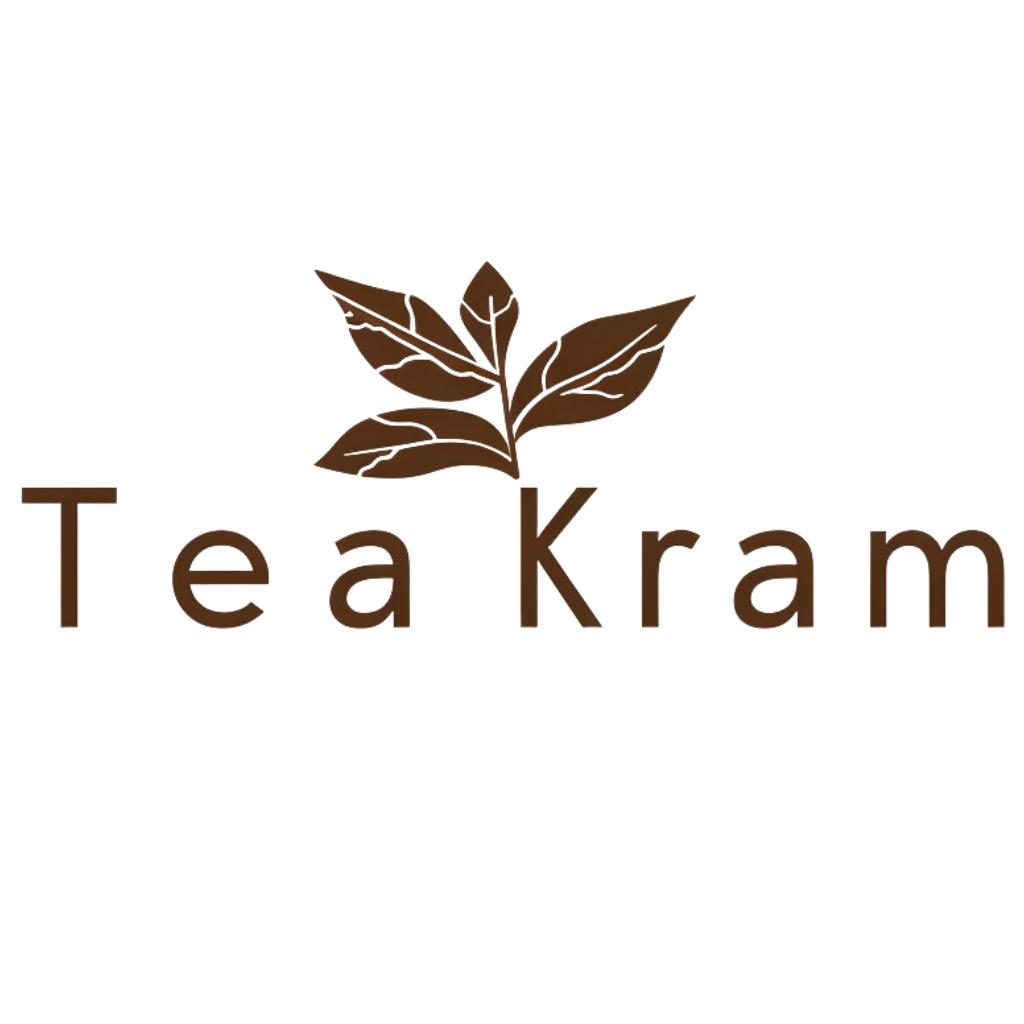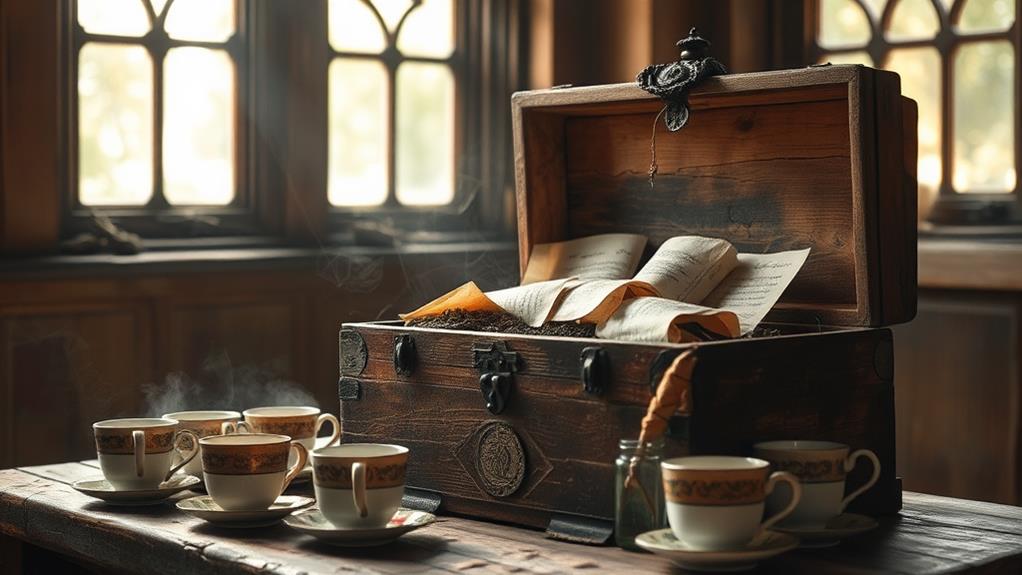You won't believe this! Researchers discovered ancient tea leaves in a 2,150-year-old tomb in China, highlighting tea's importance in ancient rituals and daily life. This burial site belonged to a notable figure, suggesting that tea was part of ceremonial offerings. Back then, tea wasn't just a drink; it was woven into social customs and practices. People cherished its medicinal properties and celebrated community gatherings with it. Archaeologists used modern techniques, like carbon dating, to analyze the findings and uncover insights. It's amazing how something so simple can connect us to the past—stick around to learn even more!
Discovery Location and Context
Archaeologists recently unearthed a remarkable find: ancient tea leaves dating back 2,150 years, discovered in a tomb in China. This discovery location, a burial site for a prominent figure, adds layers of contextual relevance to the find.
Imagine unearthing something so old that it connects you directly to a culture that valued tea not just as a drink, but as a significant aspect of daily life and rituals, as seen in traditional tea ceremonies from around the world.
The tomb's location in China suggests that these tea leaves could have been part of a ceremonial offering, reflecting the importance of tea in ancient traditions. It's fascinating to think about how this discovery shines a light on the social customs of the time. You can picture a time when tea was brewed for honoring ancestors or guests, a practice that has evolved yet still resonates today.
This innovative find opens up new avenues for research, inspiring you to explore how ancient practices inform our modern lifestyles.
As we sip our favorite blends, we can appreciate the deep-rooted history of tea, reminding us that even a simple cup can hold centuries of significance. Who knew a sip could taste like history?
Historical Significance of Tea
Recognizing tea's historical significance reveals its deep roots in cultural practices and social customs across civilizations. This beloved beverage has shaped societies in various ways, highlighting its importance beyond just taste.
Here are three key aspects of tea's historical impact:
- Tea Trade: The tea trade flourished, connecting distant lands and creating economic opportunities. Merchants traveled great distances, sharing flavors and fostering relationships between cultures.
- Medicinal Uses: Ancient societies valued tea for its medicinal properties. People believed it could cure ailments, boost health, and promote well-being. This belief laid the groundwork for modern herbal medicine.
- Social Rituals: Tea has always been a staple in social gatherings and rituals. From Japanese tea ceremonies to British afternoon tea, these customs foster community, understanding, and shared experiences.
As you explore tea's history, you'll see how it transcends mere consumption, enriching lives and bridging cultures. Each cup you sip connects you to a legacy of trade, health, and social bonding.
Ancient Tea Consumption Practices
Tea's rich history not only speaks to its trade and cultural significance but also highlights the various ways ancient societies consumed this cherished beverage. You might be surprised to learn that tea preparation varied widely, reflecting the unique customs of each culture.
| Culture | Key Practices |
|---|---|
| Chinese | Steeping leaves in hot water, often with herbal blends for added flavor and health benefits. |
| Japanese | Whisking powdered tea in a bowl, emphasizing ritual and mindfulness in their tea ceremonies. |
| Tibetan | Mixing tea with butter and salt, creating a nourishing drink suited for high-altitude living. |
As you explore these practices, consider how they shaped social interactions and community gatherings. In ancient times, tea wasn't just a drink; it was a vital part of life, often enjoyed in connection with others. The use of herbal blends also showcased innovation, as societies experimented with different flavors and health properties. This creativity in tea consumption laid the groundwork for the diverse tea culture we experience today. So, whether you're steeping a classic green tea or blending your own herbs, remember that you're partaking in a tradition that's thousands of years old!
Archaeological Findings and Techniques
When you delve into the world of ancient tea, it's fascinating to uncover the archaeological techniques that reveal its long-standing significance. Researchers use innovative methods to study ancient artifacts, helping us understand how tea played a role in historical cultures.
Here are three key techniques that make this exploration possible:
- Carbon Dating: This technique helps determine the age of tea leaves and other organic materials, providing insights into when they were consumed.
- X-Ray Fluorescence: By analyzing the chemical composition of ancient pottery, scientists can uncover traces of tea and other substances used in brewing.
- Microscopic Analysis: This method allows researchers to examine tiny fragments of tea leaves, revealing information about the types of tea that were popular in ancient times.
These archaeological techniques not only enhance our understanding of ancient tea consumption but also spark curiosity about the cultural practices surrounding it.
Each discovery adds a piece to the puzzle, painting a vivid picture of how tea has influenced societies throughout history.
Cultural Impact of Tea in Society
Throughout history, tea has woven itself into the fabric of cultures around the globe, shaping social interactions and traditions.
Imagine sitting down for a tea ceremony, where every sip is steeped in meaning. These ceremonies aren't just about drinking tea; they're vibrant social rituals that bring people together. Whether it's the Japanese tea ceremony, which emphasizes mindfulness and respect, or the British afternoon tea, where friends gather to chat and enjoy pastries, tea creates connections.
In many cultures, sharing tea signifies hospitality and friendship. Think about it: when you invite someone for tea, you're sharing more than just a beverage; you're offering a moment of pause in today's fast-paced world. It's a chance to converse, bond, and even innovate, as new flavors and brewing techniques emerge.
As you sip your next cup, consider how tea transcends mere refreshment. It's a symbol of community, creativity, and cultural heritage. Each brew tells a story, and each gathering strengthens ties.
FAQ
How Can I Brew Ancient Tea Found During This Discovery?
To brew ancient tea, experiment with different brewing techniques to enhance its unique flavor profiles. Start with lower temperatures and shorter steep times, then adjust until you discover the perfect balance that excites your palate.
What Types of Tea Were Commonly Consumed in Ancient Times?
Imagine a bustling marketplace, aromas swirling. In ancient times, you'd sip fragrant jasmine, robust pu-erh, and delicate white teas, each steeped in historical tea rituals that connected communities, igniting innovation in flavors and traditions across cultures.
Are There Health Benefits Associated With Ancient Tea Varieties?
Ancient tea varieties offer numerous health benefits, acting as natural remedies for various ailments. By exploring these traditional brews, you're tapping into centuries of wisdom that could enhance your wellness and inspire innovative health practices today.
What Methods Were Used to Preserve the Ancient Tea?
You'll find that clever fermentation techniques and optimal storage conditions played crucial roles in preserving the ancient tea. These methods not only safeguarded its essence but also sparked innovation, creating unique flavors that captivate modern enthusiasts.
Can I Purchase Similar Ancient Teas Today?
You can definitely purchase ancient teas today. Explore reputable vendors specializing in ancient tea sourcing, offering historical tea varieties that deliver unique flavors and experiences. Embrace innovation while savoring the rich heritage of these remarkable brews.
Final Thoughts
In conclusion, discovering 2,150-year-old tea not only highlights its ancient roots but also shows how deeply it's woven into cultures worldwide. Did you know that about 3 billion cups of tea are consumed daily? That's a staggering amount! This statistic reminds us that tea isn't just a drink; it's a shared experience that connects people across time and place. So next time you sip your favorite brew, think about the rich history behind it and the countless people who enjoy it just like you!




Pingback: Three Unsuspecting Facts About Tea - TeaKram